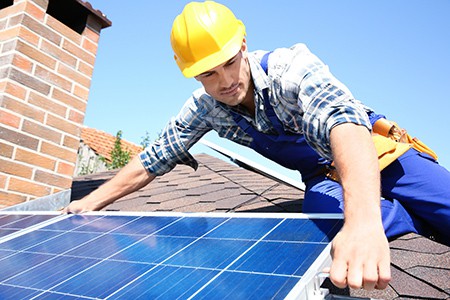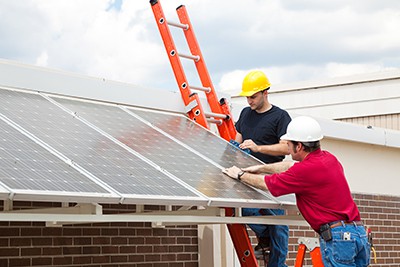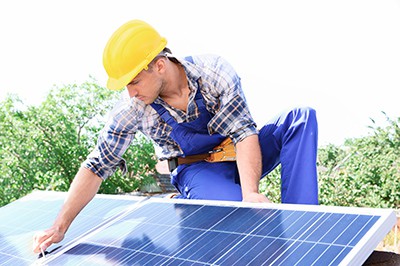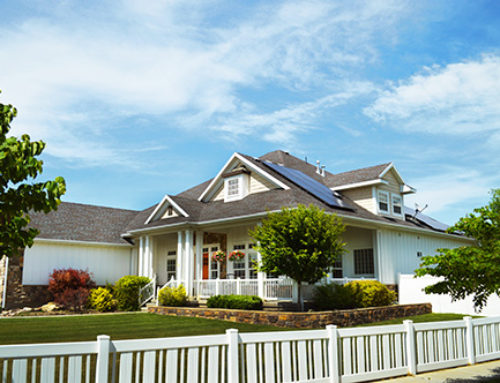The popularity of the green design movement has now spanned over two decades and quickly moved from corporate led initiatives to the private sector, specifically, solar panels uses for homeowners.

Appeal continues to grow as new technologies make it easier and more affordable for the installation of mini solar panels, the availability of used solar panels, and the tax credit allocation that can be used by consumers and corporations choosing to switch to the solar system for electricity. Many homeowners who would like to opt for the conversion to a home solar system may feel they are unqualified to make an educated decision about the process.
Here is some general information homeowners need to know in order to begin the discussion of introducing solar panels and other eco friendly energy saving devices into their home.
Solar Cells: How They Work
Converting an existing system to solar voltaic cells requires an overhaul to the current system, which can be labor intensive depending on the age and size of the original equipment.

The solar voltaic cells are the active ingredient for turning a solar system for electricity into the renewable energy used to power a home or business complex. These solar panel cells work by responding to the movement of the daily sun and rotating or sliding along solar racking systems to capture energy from the sun and store it for later use.
This process of converting natural solar energy into the common direct current electricity used for homes requires special equipment. The basic set up will vary depending on the size and expected usage. Homeowners should determine beforehand where they will locate the solar battery. This is one of the more permanent structures associated with the solar cell conversion and should be planned out well in advance of the commencement of work. Measuring for the appropriate size solar panels is also part of the preparation work, but the solar panels are easily adjustable to ensure the proper fit along the specially designed tracks.
Getting Started
Upon deciding that a transition to solar energy is desirable, some quick research is required to get the process started. The first step is to inventory the existing system to determine a cost estimate for parts and labor. A power systems solar capacity is based on the quality and capability of the solar panel size, and proximity to available solar power for absorption. While many homeowners may shy away from learning about the actual conversion process, the set up is quite simple in design and operation. Aside from technical jargon that may seem confusing or even dangerous to those not well versed in electrical systems, solar system installation is a routine process today. Expert solar energy specialists are available in most rural and metropolitan areas to answer questions and provide installation support.
Labor and Material Costs
Depending on whether this will be a DIY project or a contractor is going to assist, the cost of a home solar panel system will vary.

For example, the labor required to safely uninstall an existing electrical system could be one of the largest expenses of the process of a power systems solar conversion. However, this initial cost pales in comparison to the long term cost savings of the renewable energy used.
Additionally, the price for initial set up and ongoing maintenance are significantly reduced compared to their original introduction. New technology again continues to make advancements in the available processes of affordable installation. The overall cost of the initial setup to convert to solar energy will depend on a variety of factors. Regardless of the facility being converted, most materials are available for purchase online, often at discounted prices.
Finding the Right Equipment
After receiving a cost estimate for labor and materials, homeowners then have a choice of proceeding with the work on their own or consulting with a professional contracting service. In most cases, an industry professional will be required to ensure an accurate and efficient installation of solar racking systems and solar panels, especially if the homeowner is considering rooftop solar mounting. The correct solar panel size is vital to a system that will function properly and provide the desired results. It is best to trust this to the experts. Cost reduction efforts can be found through the purchase of used solar panels. Additionally, many of the necessary materials, including mini solar panels can be purchased online, or through your local solar companies. The tax credit allocation provides a future savings that will be recognized when tax returns are filed.
Care and Maintenance of Solar Cells
Generally, it will take a few days for the solar absorption to collect and stored levels to stabilize for continuing usage.

The purpose of a solar system is to transfer stored energy from the sun into direct current electricity. Solar cell panels require little maintenance once they have been properly positioned. Regular inspections can be scheduled to ensure maximum efficiency and productivity of placement and absorption. Inverter replacement parts are available online and can be installed by an industry professional. The minimal cost of maintaining a home solar cell system further enhances the attraction and continued growth of solar home system sales.
Common Uses and Benefits of Direct Current Generators
The most obvious benefit of transitioning to a home solar system is the sustainability of the environment. Direct current generators are often more durable than comparable methods of converting and directing energy for the purpose of providing electricity to a structure. Relying on solar energy also reduces the strain on aging electrical grid systems, particularly in densely populated areas. Along with reducing the carbon footprint, solar power options bring renewable energy used to the forefront of an already popular alternative. This solar power option can be used virtually anywhere electricity is used. Homes, businesses, and government or public locales can all rely on the availability of renewable energy via solar cell systems.
Solar panels uses have also increased in popularity in another venue. Government programs, such as low income housing developments tend to benefit greatly from solar panel systems. The cost benefits may arise from repurposing used solar panels during ongoing construction or demolition projects. Inverter replacement in areas that offer low income housing are often performed to increase efficiency in providing electricity to a large number of residents in a relatively compact area. This solution provides a relief for the environment and decreases the taxing burden of grids that serve a large number of people or are prone to blackout conditions. Another relief is for the direct consumer, whether or not they reside in low income housing, they are likely to save money on their electricity and utility bills.
